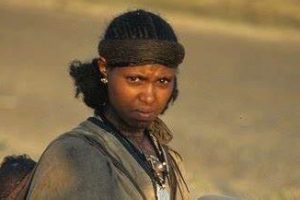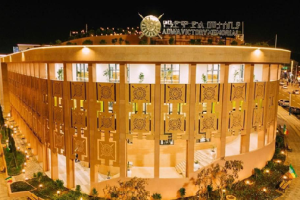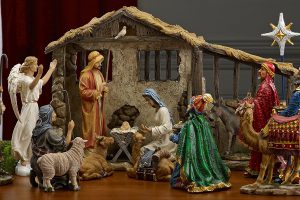Alferrid who left home when he was three years old goes back to his poor mum with a cow and a calf as a gift on the eve of Id Al Adha.
(Part I)
Alferrid Mohammed came to Addis Ababa the capital of Ethiopia when he was three years old. His father had to migrate from the densely populated Gurage land to Addis Ababa, the big apple, to earn a living. Now the big apple is even bigger for the Gurages trade. They do all sorts of job from shoe shining, carpentry, construction work, vegetable farming, basketry, shoemaking, cloth weaving, handicraft, whatever industry and business from Eritrea to Nairobi, from Ilubabor to Mogadishio. The Gurage elites even do business in USA, the Middle East and India.The Gurage people are envied by other Ethiopians for their cooperation and making it from scratch. They are given nicknames like “Ethiopian Jewels” for their thrift and entrepreneurship ’Ethiopian Japanese’ for their copping foreign innovations and the Ethiopian Chinese for their hard working and persistence.
Alfred’s father after 2 months he immigrated to the capital and started living with his three year old son in communal domicile with his kins, Gurage Shoe-shinie boys and vendors, got sick. He left his first son Alferrid with his roommates in Addis and went back to Gurage country with the hope that he would come back in good health. But unfortunately he died two months later. The shoeshine boys communal domicile was a home for his son Alferrid and his fellow countrymen. The Shoeshine boys and vendor boys collectively cared for Alferrid and raised him up to the age of seven. In Ethiopian society when a kid is seven he can assume some responsibilities. He or she can look after the animals in rural setting or care for younger brothers and sisters or give a helping hand to parents and start learning their craft apprentice. Seven is also the age when Ethiopian kids start fasting whatever religion they may have.
For Alferrid serious life has started early in the busy capital of Ethiopia Addis Ababa with a population of three million and with 33% unemployment. Alferrid as a Gurage boy would never be allowed to beg as fatherless kids from other ethnic groups do. The bigger shoeshine boys and vendors raised money and bought a complete shoeshine kit, taught the seven year old Alferrid the craft, told him to shine shoes and win his own bread, and pay back the money for the shoeshine kit to the shoeshine boys’ cooperative when he had made enough money.
Alferrid now ten years old has paid back the cooperative for the loan he was given for the shoeshine kit. He makes 3 to 4 Birr (Ethiopian money equivalent to US $0.75 then) a day. He spends about 20 cents US a day for his food. He pays for his night school the rest he saves.
One lucky day he was shining my shoes on the veranda of my flat. A Swiss Radio Journalist Monika Oettli arrived to go and cover the trial of the former military rulers of Ethiopia with me. Alferrid got another customer Monika Oettli. As he was shining her shoes he asked Monika Oettli if she would take him with her to her country, Monika Oettli told him that she is a roving journalist covering the whole of Africa that she won’t be able to raise him properly. But she decided to interview him for Swizerland Radio. At the end of the interview Monika Oettli asked Alferrid what he would do if she gave him 50 Birr (US $7) for the interview. Alferrid was surprised that is what he would make in two weeks. He has a quick brain, cultivated from survival on the street and acquired from his Gurage tradition of hard work and saving.
Alferrid who has not seen his poor mother for seven years since he was three said: “With some of the money I would buy second hand cloth and a pair of shoes the rest I will keep and save the money from my earning, by the time I have made enough money I would buy a cow for my mother.”
Alferrid’s interview was played over the Swiss Radio a week later. Of the Radio listeners three philanthropists wanted to buy a cow for Aferrid’s mother.” Coincidentally, Mr.Karl Hageman the 1st Secretary of the Swiss Embassy was on a holiday in Swizerland with his mother and heard Alferrid’s interview by chance. Of course he didn’t know then that the responsibility of buying cows would fall on his shoulders.
I the author of this article an Ethiopian Journalist, working for the Inter Press,(IPS) in Ethiopia did not expect that I would be involved in in re-uniting Alferrid with his mother after his seven years of separation.
Monika Oettli the Swiss Radio Journalist telephones my house 10 days after she interviewed Alferrid. I was in a bad mood when the telephone rung. That morning the president of the world Bank Mr.Wolfesson was delivering a speech to the organization of African Unity(OAU).I was told by his lady information officer that he did not have written speech. After I set up my recording machine and mounted my mike on the podium at the Historic African Hall Head of the common Service at the UNESCA ordered the security officer to take away my machine. It was unfair. I was so irritated. I had no actuality for VOA.I was so furious and frustrated I couldn’t eat my lunch puffing cigarettes. Then the phone rings. It was Monika Oettli from Zimbabwe. She said”Some people who heard Alferrid’s interview over Swiss Radio want to buy him cows.” That took away the frustration of the day from me. Monika Oettli asked how she can send the money and how much a cows costs? I said I would open up a Bank Account under Alferrid’s name and tell her the account number and the cost of a cow next time she calls. To my surprise the government-owned Commercial Bank of Ethiopia does not allow anybody under the age of 18 to have an account.
When Monika Oettli called a week later I recommended to her that the money contributed to Alferrid be sent to the Switzerland Embassy in Ethiopia.
Two weeks later three philanthropists from Switzerland, Mrs. Elsib Johen a farmer’s wife contributed 3,000 S.Fr,Mr.P.Nenhaus a car repairer 1,000S.Fr. and Reverend Pezoraro 500S.Fs.
The contribution was delivered to Mr.Haggeman at Swiss Embassy in Addis Ababa. Now Mr.Hageman and I drive 200kms in rural Ethiopia with Alferrid who left his village when he was three.
We left Addis Ababa the capital at seven in the morning on March . We reached Wolkite Town the second capital of Giurage on the main asphalt road to Jima the capital of Kaffa Province (The third largest capital of Ethiopia where coffee originates from).It was a pleasant ride and a pleasure to Alferrid a street boy, to be driven in Mitsubishi four wheel drive which he has never never dreamt to set a foot on. Up to Wolkite town we had pleasant ride on the tarmac road. We stopped in a bar at Wolkite had a drink and inquired where ‘Sehe’ the place Where Alferrid’s mother lives. A driver mechanic told us it was 50kms from Wolkite on the all-weather gravel road built by contribution of the Gurage people. We drove in the direction we were instructed. Two of the towns before ‘Sehe” had signs we knew where we were. But past that no sign on the road. We drove past Sehe no signs, and by the time we drove eighty kilometers we had to stop and ask a bus driver. He told us that we had to go back thirty kms. We went back and found Sehe to be a small village with only one tin roofed house which, had a shop and a Teji Bet(a local Bar where people drink honey wine or mead)When Alferd and I ,inquired the people to locate Alferrid’s mother. This Seche was not the right place Aferrrids belongs to. It was a different clan they spoke a different dialect of Gurage language. The elder who owned the Bar told us to drive back 37 kms and to reach to a point where the road branches off and drive another 40 kms to the town near Alferrids’ mothers place and make an inquiry, When we learned this it was 4.30 p.m. in the afternoon. In Ethiopia Feremjis (foreginers) are not recommended to drive past 4 p.m. on rural roads. Mr.hangman was kind enough to pursue Alferrid’s mother beyond the time limit with his own car driving with all the pot holes on the rough road After we drove 20 kms we reached an intersection road and a small town under construction. We inquired a young lad if we were on the right track to Woyra town. Hiding his ignorance of the place he led us to the wrong direction. We drove seven kilometers on a totally damaged road and reached the District town of Enemor and Iner. It was five in the afternoon all government offices closed. We asked the first person may be in her late fifties sitting under a shade and waiting for traders to buy ‘Kaht ’(A drug leaf heavily consumed especially by the youth in the Horn of Africa and part of the Middle east)He again hiding his ignorance told us that we had to go one and half hour on foot to reach Sehe. To crosscheck we went into the town and came to a cluster of shops and bars. Since people saw a “Frenji” and strangers from Addis Ababa they all came out. We were swarmed by kids and older people. We found ourselves talking to a crowd. By chance a young school teacher spoke Enemore, Alferidd’s dialect, and told us “Seche is located in Dilibo Peasant Association and we had to drive back seven Kms and where we branched of and drive another 20 kms to Weyera Town and inquire at the market place/By then it was 5:30 in the afternoon.
We drove back to the juncture we were misguided. We found an NGO car coming from the direction of our destination. We stopped and asked them where ‘Sehe was. Though native Gurages they did not know exactly where this place was. Instead they recommended to give a ride to Etagegn. She happened to be from Enemor. She spoke the same dialect as Alferrids. When Alferid discovered that he did not exactly know his country he was afraid to the extent that he became uncommunicative. He would only whisper a word or two. He thought that we would take him back to Addis without seeing his mother. His excitement when we left Addis was gone. But the girl spoke to him in his native tongue slowly managed to get some information out of him.
BY LAEKE MARIAM DEMESSIE
The Ethiopian Herald 30 April 2021





